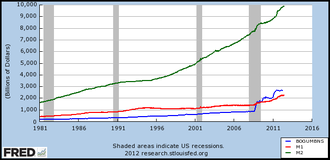Choosing a country code or generic TLD for your domain name depends
on the goal of your website. If you want to target a specific location
or country, like the Netherlands for instance, then choosing .nl makes
perfect sense. It communicates to people that you’re indeed in the Dutch
market and eliminate any confusion your visitors might have.
On the other hand, you could be choosing a generic TLD like .com and
have no problem competing with other Dutch websites that use .nl. It’s
about the content, the products, and the user experience that your site
offer, and not about the TLD you choose. Besides, if you want to serve a
wide range of international audiences, or if you plan on expanding your
business to foreign countries, then a generic TLD is a much better
choice.
Country code TLD or subdirectory for sites with multiple languages?
If your website is available in multiple languages, you might be
wondering what the best solution is. Should it be domain.com/uk/ and
domain.com/de/ (subdirectories or subfolders) or domain.co.uk and
domain.de (which use country-specific TLDs)?
For SEO, using a subdirectory makes more sense. If you use a
subdirectory, all links will go to the same domain. Marketing is
easier because you have one main domain. And all the backlinks you get
are also attributed to that main domain. If there are language
differences per subdirectory, add the hreflang tag to your pages to tell Google about that.
Note that a subdomain, like the “www” we mentioned, is something
totally different than a subdirectory. For instance, we have a dedicated
website to store technical information related to our software for
developers at developer.yoast.com,
which is a subdomain of yoast.com. Google actually considers this to be
a different website than yoast.com. Though we’re sure they can connect
the dots.
Does the age of a domain influence SEO?
The age of a domain – referring to how long your
domain already exists – doesn’t matter for SEO as much as it did before.
Some may say it doesn’t matter at all. Nowadays, it’s much more about
the content, the technical setup, the user experience, and how well your
website answers the query people used in Google. You’ll have to be the
best result to rank for a query.
As a matter of fact, John Mueller of Google confirmed way back in 2017 that domain age doesn’t matter:
Is it that black and white? No, it’s not.
Domain age as such might not influence ranking. But older domains may
have a nice amount of backlinks, pages ranking in the search result
pages, etc. And obviously, that might influence ranking.
Does Exact Match Domain (EMD) give you a ranking advantage?
Let’s say Buycheaphomes.com is an existing domain name (it probably is). This is an example of an Exact Match Domain name.
In 2012, Google introduced what we now call the EMD Update. Google changed its algorithm so websites that used domain names like that wouldn’t rank just for the simple fact that the keyword was in the domain name. And yes, that used to be the case, before the update.
So, after this update, does it still pay off to use a domain name that includes a keyword? For the most part, the answer is no.
You don’t need a certain keyword in your domain name. You can build a
site on a different domain, write content that targets that specific
keyword or topic, and still outrank a site with the exact keyword in its
domain name.
But if you managed to build a brand around an EMD, and you still
get lots of traffic, keep up the good work. Just make sure your branding
is absolutely top-notch.





